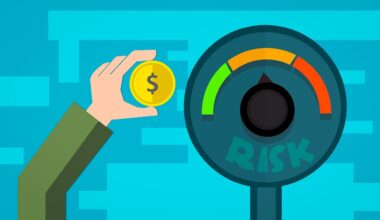The Role of Auditor Judgment in Audit Risk Modeling
Audit risk modeling is an essential component in the auditing process, as it helps auditors identify potential areas of risk within an organization. The accurate assessment of these risks is influenced heavily by the judgment of the auditor. This involves the ability to interpret information, weigh evidence, and make decisions that will ultimately guide the audit process. Auditors must possess a comprehensive understanding of the underlying factors that affect financial statements to effectively model audit risk. These factors include not only quantitative data but also qualitative aspects of the organization’s operations. Moreover, understanding the client’s industry, regulatory environment, and internal controls can significantly enhance an auditor’s risk assessment. The integration of both qualitative and quantitative data is crucial for creating a balanced view of audit risks. Consequently, auditors must remain vigilant and adaptable throughout the process, ensuring that their judgment reflects the current conditions and potential challenges faced by organizations. This highlights the importance of continuous monitoring of both internal and external factors that may impact audit risk decisions. Overall, auditor judgment plays a pivotal role in ensuring that these assessments are thorough and accurate.
The evaluation of audit risks often requires the utilization of statistical techniques and modeling tools, which can simplify complex data into manageable forms. However, the reliance on these quantitative models does not diminish the importance of auditor judgment. While such models provide a framework for identifying risks, it is the auditor’s experience and intuition that help interpret findings and determine the most appropriate course of action. An effective audit risk model must incorporate both human insights and data analytics, enabling auditors to draw conclusions that are not only data-driven but also contextually relevant. Moreover, auditors should critically evaluate the assumptions underlying their models to ensure they remain valid in different scenarios. An important aspect is communicating the rationale behind their judgments, particularly to stakeholders who may not have a technical background in audit processes. Providing transparency helps in building trust and fostering a collaborative environment. At times, judgment can be influenced by cognitive biases, which may lead to misinterpretation of data or overlooking critical information. Thus, auditors must be aware of these biases and actively work to mitigate their effects during the risk assessment process.
Understanding the Impact of Context on Judgments
The context in which audits occur can profoundly influence auditor judgment in risk modeling. Various factors such as organizational culture, market dynamics, and regulatory changes all play significant roles in shaping an auditor’s perceptions and decisions. For instance, an organization undergoing significant operational changes may present heightened risks that need to be accounted for in risk assessments. Auditors must remain aware of such variables and how they might affect a company’s financial reporting. Furthermore, external pressures, such as stakeholder expectations and corporate governance, can also impact an auditor’s approach to risk evaluation. As they navigate through complexities, auditors must uphold professional skepticism, balancing the need for thoroughness with the realities of business practices. This approach ensures that the auditor’s judgment remains objective and is aimed at maintaining integrity in financial reporting. The role of judgment becomes even more pivotal in environments characterized by rapid change, as historical data may not sufficiently predict future risks. Therefore, continuous learning and adaptation are essential for auditors to enhance their judgment amidst the evolving landscape. In essence, auditors need to be equipped with both skills and knowledge to optimize their decision-making.
Communication among audit teams is also vital in enriching auditor judgment. Collaborative discussions can unearth diverse perspectives on potential risks and inform better decision-making. By fostering an environment of open dialogue, auditors can challenge each other’s assumptions and critically evaluate their judgments. Equipotential viewpoints lead to a more comprehensive understanding of risks, promoting a holistic approach to audit risk modeling. Additionally, structured feedback mechanisms allow auditors to reflect on their judgment calls and identify areas for improvement. This ongoing process not only enhances individual competency but also strengthens the team’s overall effectiveness. Industry best practices can be shared through collaboration, encouraging auditors to consider innovative approaches when modeling audit risks. This collective knowledge base forms a critical component of professional development where learning from one another becomes a key driver of improvement. Training programs that focus on judgment skills amidst risk assessment can help auditors sharpen their decision-making abilities. As such, enhancing communication and collaborative skills within audit teams is necessary for effective audit risk modeling to ensure that auditors are poised to handle complex scenarios successfully.
The Importance of Training and Continuous Learning
Continuous education programs play a crucial role in equipping auditors with the necessary tools to assess audit risks effectively. Such programs can provide insights into the latest audit techniques, risk assessment methodologies, and industry trends that affect auditor judgment. Staying up-to-date with regulatory changes and emerging risks is essential in the audit profession. Knowledge gained from ongoing education empowers auditors to apply their judgment more effectively in the context of modern challenges. Additionally, case studies showcasing past audit failures or successes can serve as practical learning tools, allowing auditors to analyze real-world scenarios. Furthermore, the importance of mentorship should not be understated; experienced auditors can guide newcomers, providing invaluable insights into applying judgment in nuanced situations. This form of knowledge transfer ensures that lessons learned from past audits inform current practices and enhance judgment quality. By investing in training, organizations signal a commitment to professional growth, which aids in fostering a culture that values informed decision-making. Overall, continued education and mentorship are integral to developing the nuanced judgment required for effective audit risk modeling.
Moreover, technology’s role in audit risk modeling cannot be overstated, as advancements have refined the way auditors approach risk assessments. Audit software solutions utilize data analytics to uncover patterns and identify potential discrepancies, thus providing a more detailed foundation for auditor judgment. Such tools can help auditors efficiently manage vast amounts of data, allowing them to focus on high-risk areas that warrant additional scrutiny. However, while technology enhances the efficiency of risk assessments, it is critical that auditors do not overly depend on these tools. The interpretation of data often still requires nuanced judgment that technology alone cannot provide. Thus, auditors must cultivate a symbiotic relationship between their analytical skills and technological solutions while ensuring that their assessments align with business realities. As technology advances, ongoing training will be essential for auditors to stay proficient in utilizing these tools effectively. Therefore, incorporating technological acumen into auditor training can further enhance their ability to make sound judgments based on data-driven insights. Ultimately, integrating technology into the audit process creates opportunities for more informed and effective risk modeling.
Conclusion: Balancing Judgment and Technology
The auditor’s role in risk modeling is multifaceted, requiring a delicate balance between judgment and technological tools. While rigorous risk assessment models can provide robust frameworks, the value of auditor intuition and experience must not be overlooked. The combination of clinical analysis and personal judgment leads to well-rounded audit risk evaluations that consider both data and contextual factors. As the landscape of auditing continues to evolve alongside advancements in technology, auditors must remain agile, striving to enhance their judgment while adapting to new tools. This adaptability will ultimately shape the future of the audit profession, ensuring that it can effectively navigate complexities in risk modeling. Auditors must cultivate resilience, committing to lifelong learning and continuous improvement in judgment capabilities. It is this blend of skills that will allow auditors to meet the demands of the modern business environment while maintaining the ethical standards of their profession. Emphasizing the significance of auditor judgment alongside risk modeling tools will ensure more comprehensive and effective audits. In summary, the synergy between human insight and technology enhances the overall audit process, reinforcing trust in financial reporting.


